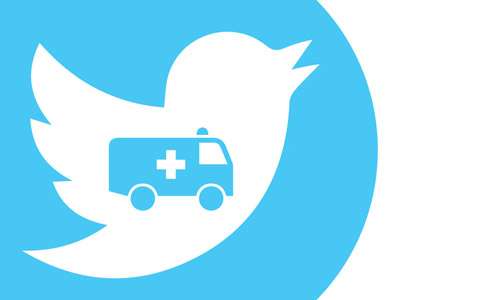New social media surveillance tool vital to public health preparedness, researchers say

A new social media surveillance tool may be the key to helping public health officials prepare for health epidemics or public crises like gun violence.
"ChatterGrabber" helps researchers use social media to identify potential health risks. Researchers seeking specific symptoms or key phrases at specific locations can harvest tweets and use the information gathered to understand whether they have an epidemic or potentially threatening situation on their hands, and alert public health officials to take any necessary action.
The software was designed by computational epidemiologist James Schlitt, under the auspices of a Modeling Infectious Disease Agent Study grant overseen by Stephen Eubank, deputy director of the Network Dynamics and Simulation Science Laboratory at The Virginia Tech Virginia Bioinformatics Institute.
Currently, the software is proving useful for a variety of applications, including EpiDash, a platform developed by Virginia Tech graduate research assistants Elizabeth Musser and Harshal Hayatnagarkar to monitor norovirus outbreaks.
Machine-learning algorithms help EpiDash screen social networks for statements of interest involving gastric illness. A dashboard helps public health officials in detecting disease, thus allowing them to mobilize when outbreaks occur.
"As a field epidemiologist, I found EpiDash to be instrumental in providing timely information about local disease issues as it adapts the speed and flexibility of social networking to disease surveillance," said Paige Bordwine, a district epidemiologist for the New River Health District of the Virginia Department of Health.
ChatterGrabber has also been used to monitor tickborne diseases, such as Lyme disease, public sentiment involving vaccines, and gun violence and terrorism, serving as an early warning system for public health officials through suspicious tweets or conversations.
"I find the potential of this as a real-time life safety information-sharing application almost limitless and look forward to implementing it in our jurisdiction," said John O'Shea, chief of the Blacksburg Volunteer Rescue Squad.
ChatterGrabber is unique in that it allows researchers to use public information made easily accessible through social media sites. Platforms like Twitter serve as a rich data source for researchers and public health officials.
Future versions of ChatterGrabber will feature interactive visualization via the EpiDash system and an enhanced partner interface, allowing users to adapt ChatterGrabber to their local dialect and public health conditions. Epidemiologists will also be able to customize the software to search for particular disease symptoms, and a version of the system is also being developed for 911 emergencies, including weather surveillance.
"ChatterGrabber and EpiDash are great examples of Virginia Tech's motto 'Ut Prosim' in action," said Eubank. "We are designing and building surveillance systems based on individual behavior to better inform preparedness services."













